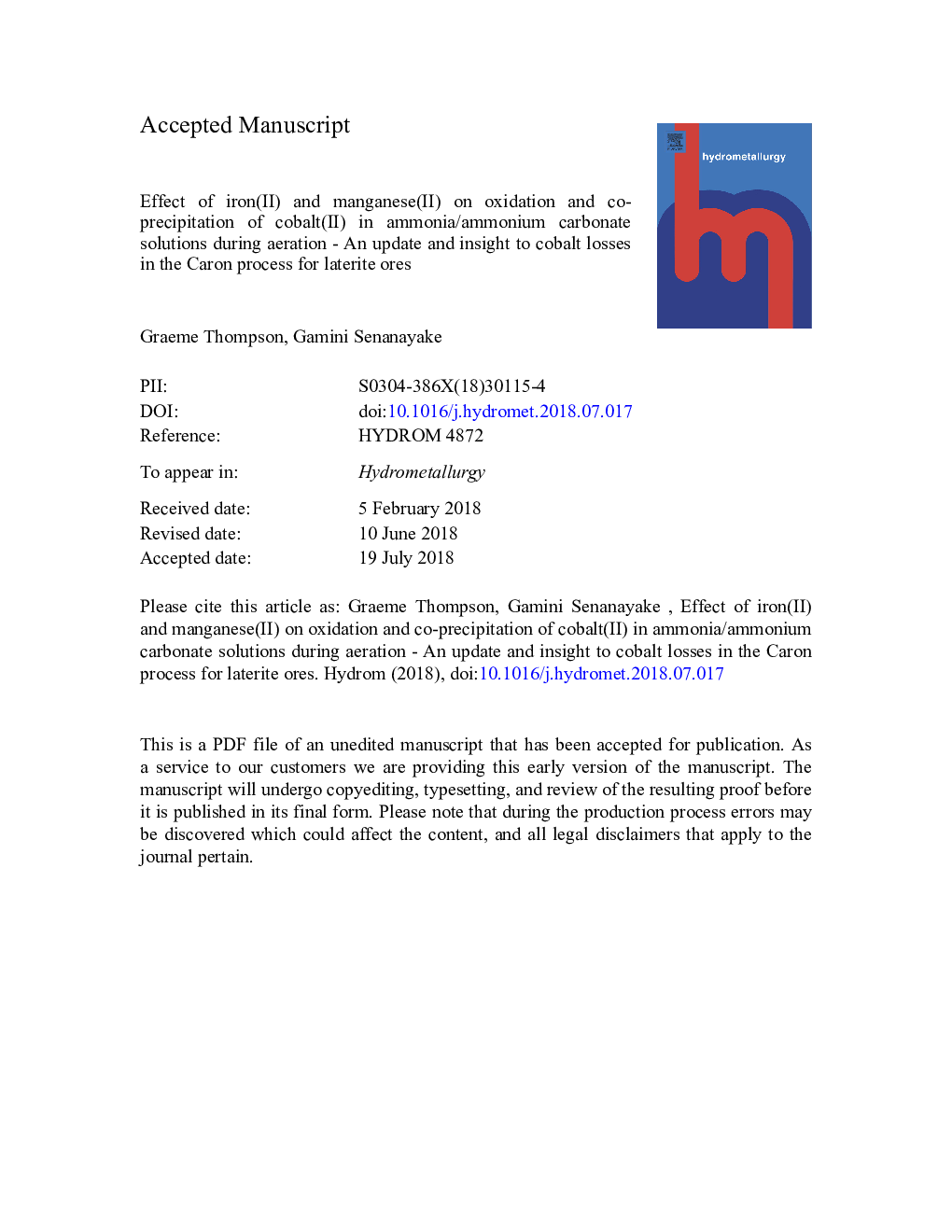| Article ID | Journal | Published Year | Pages | File Type |
|---|---|---|---|---|
| 10139057 | Hydrometallurgy | 2018 | 35 Pages |
Abstract
The Caron process involves the roasting of nickel laterite ore at 750â¯Â°C with fuel oil to produce a calcine containing Fe-Ni-Co alloy and other reacted or unreacted host minerals. The leaching of the calcine in the form of a quenched slurry in ammonia/ammonium carbonate solutions at pH ~10 and 45â¯Â°C under anaerobic and aerobic conditions sequentially dissolves alloy to iron(II), nickel(II) and cobalt(II), oxidizes iron(II), precipitates iron(III) and allows the discard of iron rich tailings after counter current decantation and steam stripping of ammonia and carbon dioxide for recycling. Oxidation of aqueous cobalt(II) during aeration in the Caron Process is one of the critical steps to reduce the incorporation of cobalt into the tailings. Cobalt(II) species which are co-precipitated with the iron phase are not able to be leached back into solution and lost to the tailings, but cobalt(III) remains in solution. Fast oxidation of cobalt(II) to cobalt(III) is expected to minimise the co-precipitation of cobalt(II) during iron precipitation, resulting in smaller losses of cobalt to tailings. Results from this study show that the oxidation of cobalt(II) species (1â¯gâ¯Lâ1) in a synthetic ammonia / ammonium carbonate (SAC) solution containing 5.3â¯M NH3/NH4+(total) and 1.5â¯M HCO3- is relatively slow at room temperature and follows first order kinetics with respect to cobalt(II) concentration. The rate of reaction is temperature dependent with an activation energy of 65.8â¯kJâ¯molâ1. The presence of manganese(II) and iron(II) increases the rate of oxidation of cobalt(II) when compared to that of cobalt(II) alone. The oxidation of cobalt(II) occurs only after most of iron(II) is oxidised to iron(III) solids which facilitates the co-precipitation of cobalt(II). The variation of the concentration of manganese(II) (0.025-1.25â¯gâ¯Lâ1) in SAC solution demonstrates minimal effect on cobalt oxidation. Analysis of the solids, using XRD, show that the final solid formed in the laboratory test by the aeration of iron(II) in SAC solution consisted of goethite and ferrihydrite and that formed by the aeration of manganese(II) in SAC solution was rhodochrosite (MnCO3). While the iron oxide precipitated during the oxidation of Fe(II) and Co(II) for 1â¯h in the laboratory test contains 0.38% Co, the cobalt content in solids formed in aerated tanks in the Caron processing plant increases from 0.15% in Tank 1 to 0.17% in Tank 4, but in all cases too low to be detected in XRD scans.
Keywords
Related Topics
Physical Sciences and Engineering
Chemical Engineering
Chemical Engineering (General)
Authors
Graeme Thompson, Gamini Senanayake,
